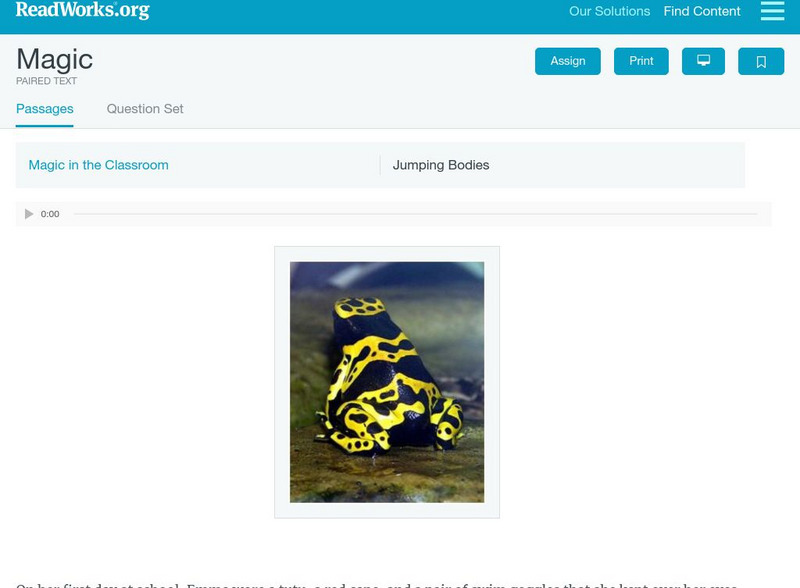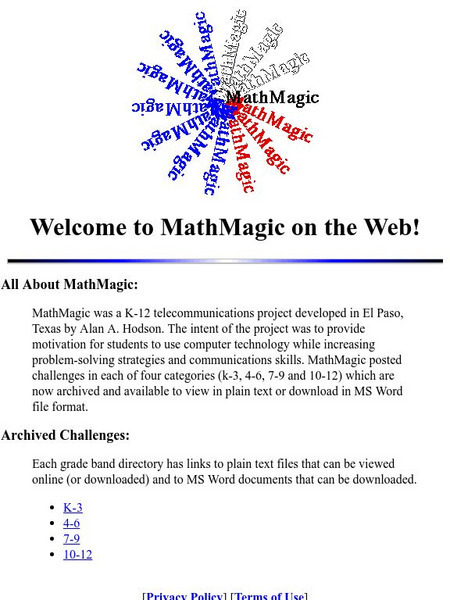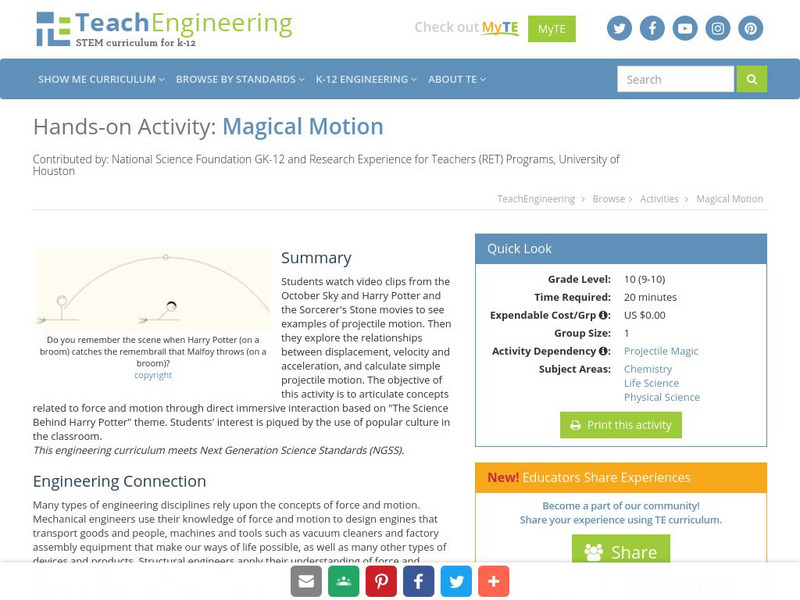Curated OER
Find the Washer
Pupils examine a closed box with wires and try to guess where the washer is. They experiment by pulling out wires to determine the location of the washer. They complete discussion questions to end the lesson.
Curated OER
Palpating Pachyderms: How Do We Interpret Observations?
Students interpret a poem before completing activities to distinguish observations and interpretations. They examine how personal background can influence how a person interpreters what they observe.
Curated OER
The Flat Earth
Students are first presented with the idea that the Earth is really flat. They prove that it is not--using a variety of techniques.
Curated OER
Japanese Folktales
Pupils listen to examples of Japanese folktales and identify universal themes. Students construct a 'kamishibai' - a traditional Japanese storytelling prop - and dramatize a folktale through puppetry.
Curated OER
Making Connections
Students draw connections between ideas and images that normally aren't put together, and combine a wide variety of words to form new images.
Curated OER
Math: Tangents
Young scholars discover how to recognize tangents and how to use their properties. They investigate and use the properties of angles, arcs, chords, tangents, and secants. Students use two tangents and the properties of similar...
Read Works
Read Works: Magic in the Classroom
[Free Registration/Login Required] Students read a story about a girl named Emma who was very different from others in her classroom. A question sheet is available to help students build skills in reading comprehension.
Read Works
Read Works: Passages: Paired Text: "Jumping Bodies"
[Free Registration/Login Required] The paired passages "Magic in the Classroom" and "Jumping Bodies" share the theme of magic. Question sets are provided for each passage separately and combined.
Science Education Resource Center at Carleton College
Serc: Investigating Starch in Foods
This lesson would be used during our nutrition unit when discussing carbohydrates. In this classroom activity students investigate which foods have starch in them by using iodine, as well as investigate the result of iodine and lemon...
National Council of Teachers of Mathematics
The Math Forum: Math Magic
Comprehensive site of MS Word files that are easy to download which increase problem solving skills using technology in the classroom.
National Council of Teachers of Mathematics
The Math Forum: Math Magic
Comprehensive site of MS Word files that are easy to download which increase problem solving skills using technology in the classroom.
TeachEngineering
Teach Engineering: Magical Motion
Students watch video clips from the October Sky and Harry Potter and the Sorcerer's Stone movies to see examples of projectile motion. Then they explore the relationships between displacement, velocity and acceleration, and calculate...
TeachEngineering
Teach Engineering: Projectile Magic
Students watch video clips from October Sky and Harry Potter and the Sorcerer's Stone to learn about projectile motion. They explore the relationships between displacement, velocity and acceleration and calculate simple projectile...
Physics Classroom
The Physics Classroom: Formation of Standing Waves
How are standing wave formations formed? Why are they only formed when the medium is vibrated at specific frequencies? What makes these so-called frequencies so special and magical? These questions are answered in this exploration of...
Other
A Magic Classroom: Nail Balance Puzzle [Pdf]
In this lesson, students try to balance fourteen nails on the head of one nail by outwitting gravity.
PBS
Pbs Learning Media: Super Scientists
Grab your science tools and explore with PBS KIDS. Through hands-on activities and exciting media that transports you to space and in the Earth, this collection will bring science to life in your classroom. These resources help students...
Donald Clark
Blended Learning
While the concept of blended learning has probably been around since the beginning of Instructional Design, the term was not coined until the late nineties. However, blended learning is probably the closest thing we have to a silver...
















